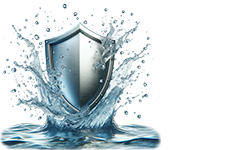You’ve decided to invest in your family’s health by purchasing an air purifier, but now you’re stuck. You’re facing a digital wall of a thousand different models, a dizzying array of technical specs, and an avalanche of conflicting reviews. This overwhelming analysis paralysis is exactly where costly mistakes are made. You could end up with a unit too weak to clean your living room, a filter that does nothing for your specific pet odor problem, or a machine so loud it ruins your sleep. It’s a recipe for buyer’s remorse. This definitive guide on what to look for when buying an air purifier will cut through the chaos. We will distill the expert’s decision-making process into three non-negotiable checkpoints that guarantee you’ll choose the perfect machine for your needs.
The Core Trinity: Your 3-Point Non-Negotiable Checklist
Forget the fancy apps and futuristic designs for a moment. The performance of any air purifier boils down to three fundamental pillars. If a unit fails on any of these three points, it is not the right machine for you, no matter how appealing its other features are.
Checkpoint 1: A “True HEPA” Filter (For Particles)
This is the absolute, unbendable foundation of effective air purification. “HEPA” is a government efficiency standard, not a marketing term.
What to Look For: The explicit designation “True HEPA.” This guarantees the filter is certified to capture 99.97% of airborne particles down to 0.3 microns. This is the gold standard for trapping the full spectrum of lung-irritating particulates: dust, pollen, pet dander, and mold spores.
What to Avoid: Vague terms like “HEPA-like,” “HEPA-type,” or “99% HEPA.” These are marketing loopholes for inferior filters that are not certified to meet the HEPA standard. They will miss the smallest, most harmful particles. This is a deal-breaker.
Checkpoint 2: A Substantial Carbon Filter (For Gases & Odors)
This is the single area where most mid-range and budget air purifiers fail. While HEPA filters are for particles, they do nothing for gases, odors, or chemicals (VOCs). That is the exclusive job of activated carbon.
What to Look For: A filter with a significant amount of granular activated carbon. In effective units, this often means a filter that feels heavy and is at least an inch thick. The spec sheet might even list the carbon weight in pounds—more is always better. This is non-negotiable for tackling pet odors, cooking smells, wildfire smoke, or VOCs from new furniture.
What to Avoid: Flimsy, carbon-dusted mesh pre-filters. These are a marketing gimmick. They have so little carbon that they become saturated with odors in days, rendering them useless.
Checkpoint 3: The Right CADR for Your Room Size (For Performance)
This ensures the filtration engine has enough power for the space it needs to protect. CADR (Clean Air Delivery Rate) is the “horsepower” rating of a purifier.
What to Look For: Use the foolproof “2/3 Rule.” The purifier’s Smoke CADR rating should be at least two-thirds of your room’s square footage. For a 300 sq. ft. room, you need a CADR of at least 200. This ensures the unit can clean the air effectively roughly five times per hour. Sizing your purifier correctly is the difference between a machine that works and one that just makes noise.
What to Avoid: Ignoring the CADR and buying based on looks or brand name alone. An underpowered purifier is one of the most common and disappointing mistakes a buyer can make.
Beyond the Core: Fine-Tuning Your Choice
Once a unit has passed the “Core Trinity” test, you can start to consider the secondary features that impact your day-to-day experience.
The Sound of Silence: Noise Levels (dB)
An air purifier you can’t stand to run is useless. Noise is measured in decibels (dB). Look for the dB rating on the lowest fan speed, as this is how it will likely run most of the time. For a bedroom, aim for a unit that operates under 30 dB on its sleep mode setting (the equivalent of a soft whisper).
The True Cost of Ownership: Filter Replacement
This is the hidden cost that can turn a bargain into a money pit. Before you click “buy,” do a quick search for the price and rated lifespan of that model’s replacement HEPA and carbon filters. A cheap unit with expensive filters that need replacing every six months can cost far more over a few years than a more expensive unit with filters that last 1-2 years.
The Most Useful “Smart” Feature: Auto Mode
Many purifiers come with a host of smart features, but the most practical and effective one is Auto Mode paired with an air quality sensor. This allows the unit to monitor your air in real-time and automatically adjust its fan speed—ramping up when you start cooking or when pollen blows in, and quieting down when the air is clean. It makes the purifier an intelligent, set-and-forget appliance.
Red Flags: What to Actively Avoid When Shopping
Q: What about purifiers that produce ozone? A: Avoid them at all costs. Ozone is a known lung irritant. Some “ionizers” can produce ozone as a byproduct. Look for units that are explicitly certified as “ozone-free” or tested by the California Air Resources Board (CARB). Your goal is to clean the air, not to add another pollutant to it.
Q: Are washable filters a good way to save money? A: Generally, no. While appealing, washable filters are almost always less effective than replaceable True HEPA filters. Their filtration efficiency degrades with each wash, and they typically cannot capture the smallest and most damaging 0.3-micron particles. The long-term savings are not worth the significant drop in performance.
Q: Is a UV-C light a must-have feature for germs? A: Treat UV-C as a minor, optional bonus, not a core feature. While UV light can neutralize germs, the exposure time for an airborne particle passing the bulb in a purifier is often too short to be effective. A True HEPA filter is far more reliable for capturing airborne bacteria and virus-carrying droplets. Never choose a unit with UV over one with better filters or a higher CADR.
From Overwhelmed Buyer to Confident Decision-Maker
The path to buying the right air purifier is not about knowing every feature of every model. It’s about knowing what truly matters. By focusing your search on the Core Trinity—True HEPA filtration, a substantial carbon filter, and the correct CADR for your room—you can filter out 90% of the noise and zero in on the high-performing units that will deliver real results. You are now armed with the expert’s checklist to make a confident, effective choice.
You now have the expert checklist to confidently choose the right air purifier. Applying this same informed approach to your home’s water is the next logical step. The world of water filtration can be just as confusing, but it doesn’t have to be. Call our experts at Safe Water Solutions, LLC at (845) 579-2014. We’ll provide the clear, honest guidance you need to make another perfect choice for your family’s health.
You now have the expert’s checklist to make a perfect, confident choice for your home’s air, eliminating the guesswork and the risk of buyer’s remorse.
Applying this same smart, informed approach to your family’s water is the most important next step you can take.
The world of water filtration is its own maze of confusing specs and costly mistakes. Are you certain the water your family drinks every day is truly pure, or are you just relying on a system you don’t fully understand?
You deserve the same absolute confidence in your water as you now have in your air.
At Safe Water Solutions, LLC, we are that expert checklist for water. We provide the clear, honest guidance our Hudson Valley neighbors need to make the perfect choice. Don’t let the weekend begin with lingering questions. Make the call that completes your healthy home strategy.
Click here to contact us or dial (845) 579-2014 for a simple conversation with our local team. Get the clarity and confidence your family deserves.

